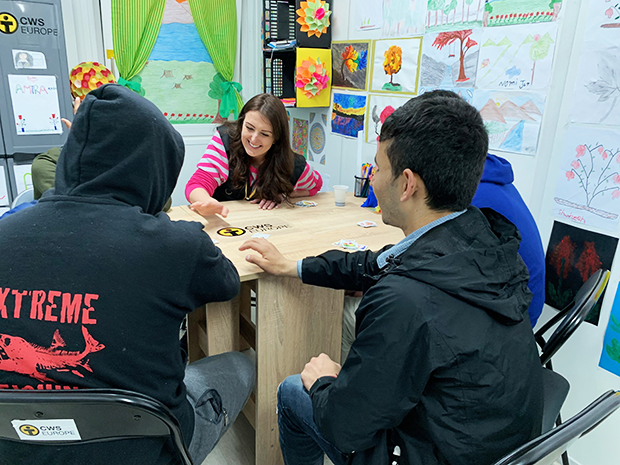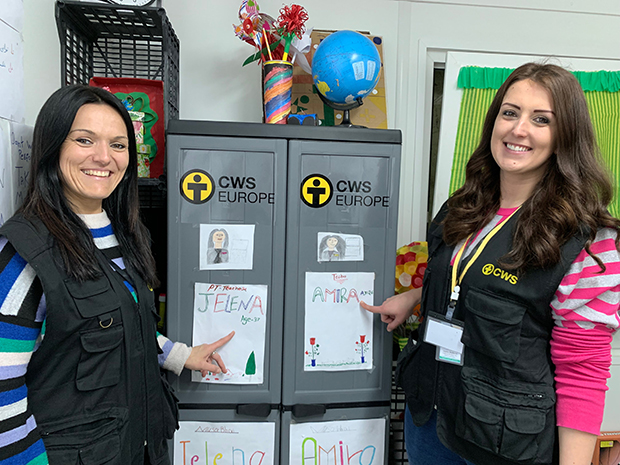 In 2017, 758 refugees and migrants entered Bosnia and Herzegovina, hoping to reach western EU nations through Croatia. Since the start of 2018, the number jumped to over 23,000. As EU nations tightened their borders, Bosnia and Herzegovina became a safe haven for refugees and migrants.
In 2017, 758 refugees and migrants entered Bosnia and Herzegovina, hoping to reach western EU nations through Croatia. Since the start of 2018, the number jumped to over 23,000. As EU nations tightened their borders, Bosnia and Herzegovina became a safe haven for refugees and migrants.
Most of the newly-arrived refugees and migrants are in the northwest, near the Croatian border. They are in a region that was ravaged by the Yugoslav War in the 1990s and is still struggling from poverty and ethnic and religious divides. Although the area was initially welcoming to refugees and migrants, tensions are on the rise as resources are stretched thin.
Our team visited the area in August and December 2018 to talk to refugees and migrants here. We heard over and over again that turning back wasn’t an option, no matter the risks. Many have been on the road for months or years. They are often demoralized and hopeless, with broken spirits and bruised bodies. Some have spent all of their money; others have been turned back from various borders multiple times—often violently. Even the stories of the Croatian border patrol’s brutality or the threat of unexploded landmines in the dangerous mountain terrain are not enough to deter them. The Bosnian border police recently reported that 100-150 people try to cross the border into Croatia every night. They say that 60 percent succeed eventually.
Refugees and migrants in the region have frequently been sleeping outside or in abandoned buildings. The movement to provide dignified accommodations for them has been growing. There are now four centers in the area providing modest services, primarily for women, children and families. A large number of people still don’t have support or can only very basic services. Plus, there isn’t a good system in place to share information between Bosnia and Serbia. Although most of the refugees and migrants are coming from Serbia, they have to start over with their paperwork and processing in Bosnia. In addition to the frustration and headache of the processes, this also means that people are having to relive their trauma again as they repeatedly tell their story.
 On May 1, we launched the CWS Strengthening Refugee/Migrant Systems of Protection and Cross-Border Cooperation in Bosnia program. The program aims to:
On May 1, we launched the CWS Strengthening Refugee/Migrant Systems of Protection and Cross-Border Cooperation in Bosnia program. The program aims to:
- improve the protection of unaccompanied and separated children and young adults through case management and child advocacy;
- increase the capacities and involvement of local protection systems in refugee and migrant response; and
- improve cross-border cooperation to ease the stresses of welcome and integration in Bihac.
Bihac is a city about 10 miles from the Croatian border. It’s where the majority of newly-arriving refugees and migrants live; it is a temporary home to more than 3,000 people. Its resources, and the capacity of its Center for Social Welfare, are limited and underfunded. We are focusing on the Bira center in Bihac, which is home to about 2,200 refugees and migrants—including about 200 unaccompanied or separated children.
Our work will focus on protecting unaccompanied or separated children as well as young adults (those under 21). This means reaching all of them in the area to assess their needs and developing action plans for those most at risk. When needed, team members will serve as temporary child advocates. We will also provide training for local teams on case management; information management; indicators of trafficking; child protection; protecting women and girls and gender-based violence risks. We will help increase the Center for Social Welfare’s capacity to provide services in Bihac. And we will build on our existing partnerships and programs that support refugees and migrants in Belgrade to improve cross-border cooperation.
Four staff, based in Bihac, are being hired for this new program that will last for at least a year, with the option to extend it if needed.
